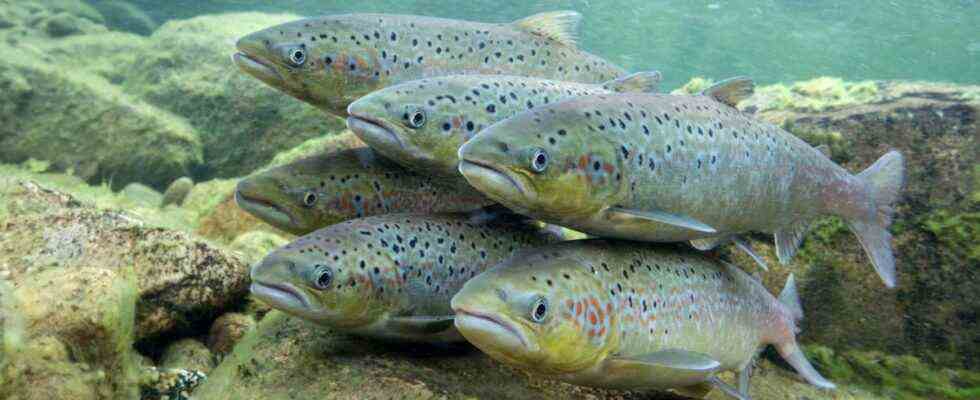Can a butterfly flapping its wings in Brazil trigger a tornado in Texas? The American meteorologist Edward Lorenz once asked this question to illustrate that tiny interventions in complex systems can have unforeseeable effects.
This phenomenon, known as the butterfly effect, also applies to the networks of nature, the interrelationships of which are hardly known. Nevertheless, people intervene in many places without even wasting a thought on what they could trigger.
Finnish biologists describe an interesting example of this in the current issue of the scientific journal Science. In their study, they demonstrate how overfishing of capelin, a small schooling fish in the Barents Sea, causes salmon that other fishermen pull out of the water many kilometers away in the Finnish River Teno to become smaller.
For their study, the team led by biologist Yann Czorlich from Finland’s Turku University evaluated data from 40 years of fishing and combined it with the results of genetic analyzes of salmon. The biologists found that there is a connection between the capelin population size in the Barents Sea and the frequency of a specific gene variant in the genome of the Teno salmon, which causes the fish to become sexually mature earlier and to be smaller. Whenever the capelin population collapsed due to overfishing – which happened several times during the study period – this gene variant accumulated in the salmon.
In order to survive, animals and plants must adapt more quickly in the Anthropocene.
According to the authors, this connection, which is surprising at first glance, has to do with the complicated life cycle of the salmon. The fish are born in the fresh water of rivers and then migrate to the sea. They spend their childhood and adolescence there, so to speak. Once they become sexually mature, they then migrate back to the river where they were born to spawn.
In the Barents Sea, schools of capelin – huge in good times – are one of the main food sources for the young salmon that live there. If the fishing fleets pull too many capelin out of the sea, the predatory fish find little to eat. The deficiency appears to result in a change in their genome that causes the salmon to mature earlier and stay smaller. ‘Human activities can exert powerful selective pressures that result in rapid evolutionary changes in wild species,’ write the study’s authors in Science. Biologists also speak of “evolution in fast motion”.
Charles Darwin, who founded the theory of evolution more than 160 years ago in his book “The Origin of Species”, still assumed that evolution is a slow process. It should take thousands or even millions of years for new species to form through mutation and selection (macroevolution) or for existing species to change (microevolution).
In the Anthropocene – i.e. the age shaped by humans – the species Homo sapiens changes its environment and thus the conditions for other animals and plants at a much faster rate than has probably ever been the case in the history of the earth. In this involuntary large-scale experiment, animals and plants have to change rapidly in order to even have a chance of survival.
It has long been known that humans, as a selection factor, can directly influence and accelerate the evolution of animals and plants. Examples of this are elephants in Mozambique who have lost their tusks because it makes them unattractive to poachers and allows them to survive. For a similar reason, many bighorn sheep in the US no longer have thick horns, but rather puny ones. And the cod has demonstrably become thinner and shorter in recent decades because small specimens slip through the nets of the fishing fleets.
The current study is one of the few understood examples of how humans influence evolution not only directly, but also indirectly: the salmon are shrinking because humans are catching a very different fish in a very different place. Ironically, the capelins in the Barents Sea are also fished on a large scale to feed aquaculture salmon.

